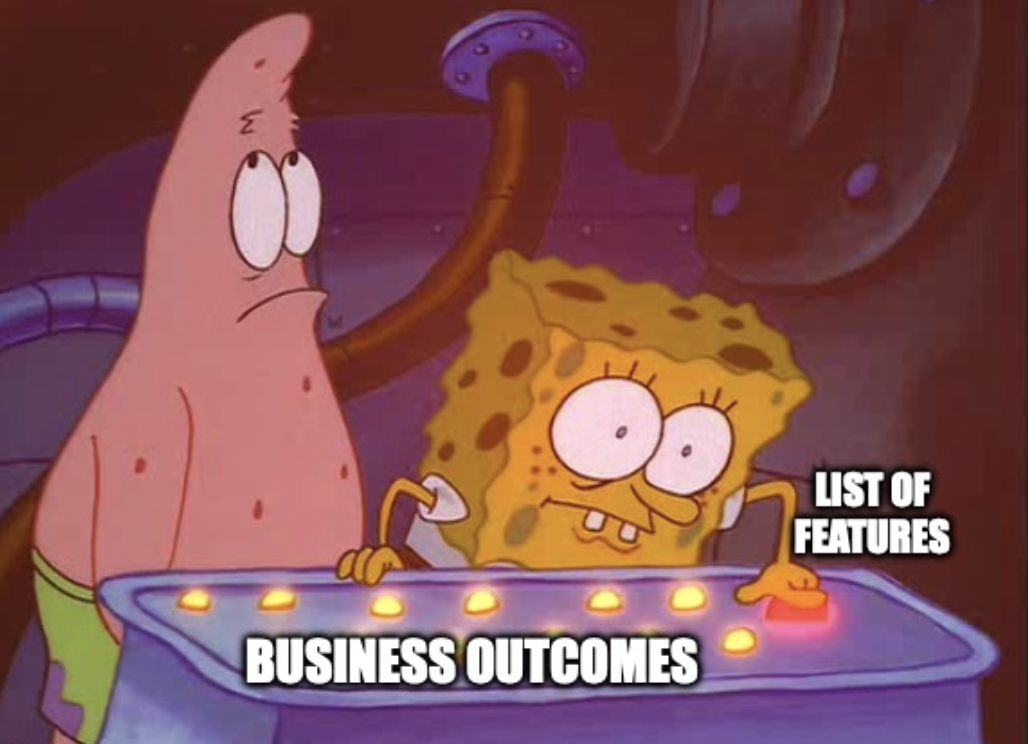How Zime's Knowledge Graph Powers Contextual Sales Execution
The real differentiator? Context.
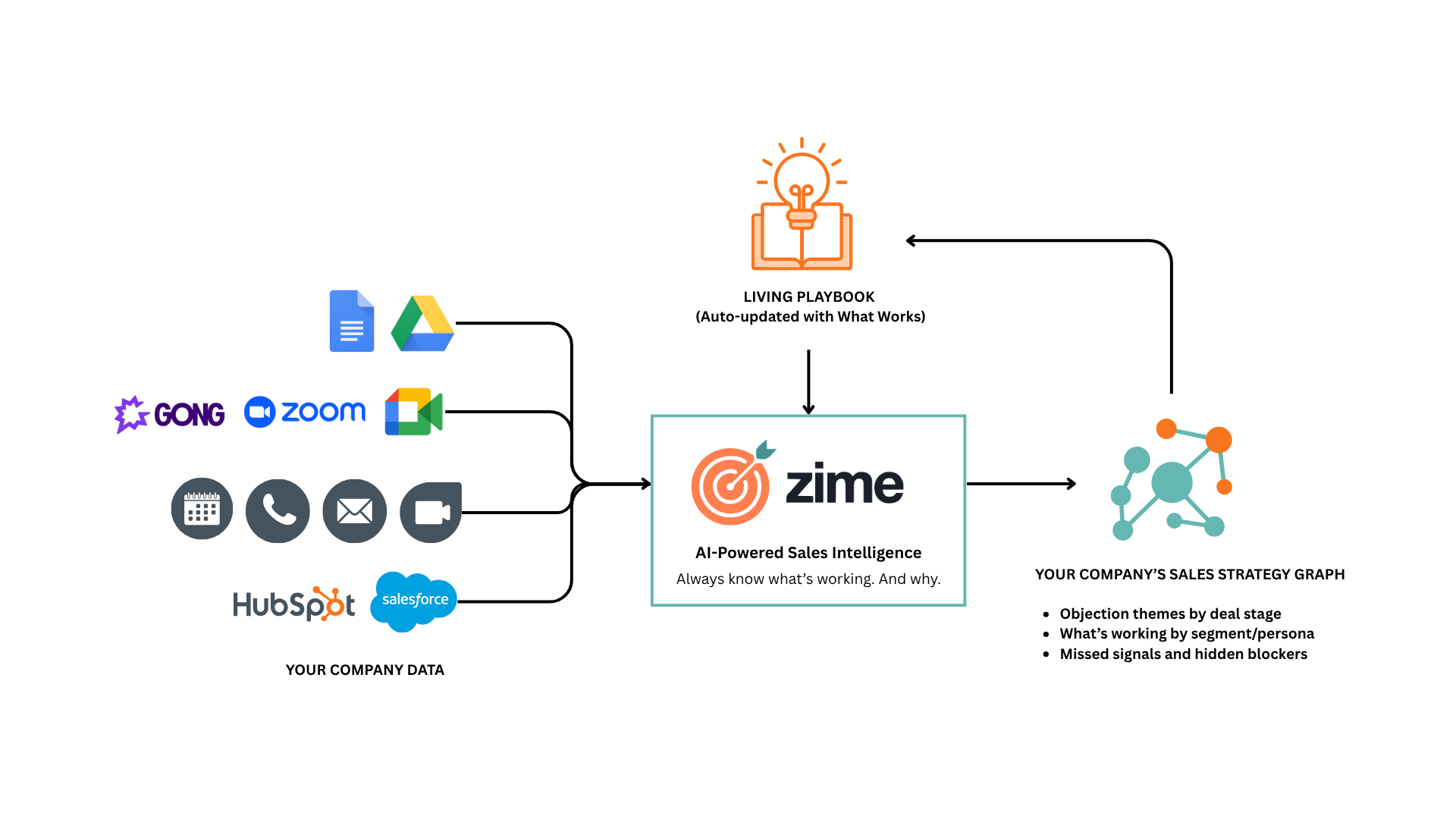

Enterprise reps and sales leaders are sitting on a goldmine of data but most struggle to extract actionable insights that can drive revenue outcomes for them. This disconnect between insights and actions leads to dusty tribal knowledge, inconsistent execution, and missed opportunities.
At Zime, we've seen this problem firsthand. So, we built something fundamentally different and at the heart of it lies a dynamic, living and breathing knowledge graph. It's what enables our AI to deeply understand your go-to-market (GTM) motion, not just respond to prompts.
This post breaks down the technology behind Zime's core-context LLM, how it is different from GPT Wrapped models, and why it matters for sales teams that are ready to lead, not lag, in the AI era.
LLM vs Knowledge Graph: Understanding the Foundation
It's tempting to think all AI products are created equal — after all, many of them can "talk" like ChatGPT. But under the hood, the architecture matters. Let's break it down:
LLM Wrappers: Skin-Deep Smartness
Many tools today are essentially wrappers around foundation models like GPT. What this means is:
- They take your prompt (e.g. "Summarize this call")
- They inject a few pre-written instructions
- They send it off to GPT or Claude
- They return whatever comes back
While these wrappers may offer UI polish or vertical-specific branding, the intelligence is outsourced. There's no persistent memory, no structured understanding, no grounding in your sales motion.
It's like sticking a Siri button on top of your CRM — it talks nicely, but it doesn't understand your GTM.
Sure, they can summarize calls or rephrase emails, but when asked things like "Did the rep bring up the updated discounting policy on this deal?" — the answers end up fuzzy, non-specific, or flat-out wrong.
Because LLM wrappers don't actually know your context, they guess.
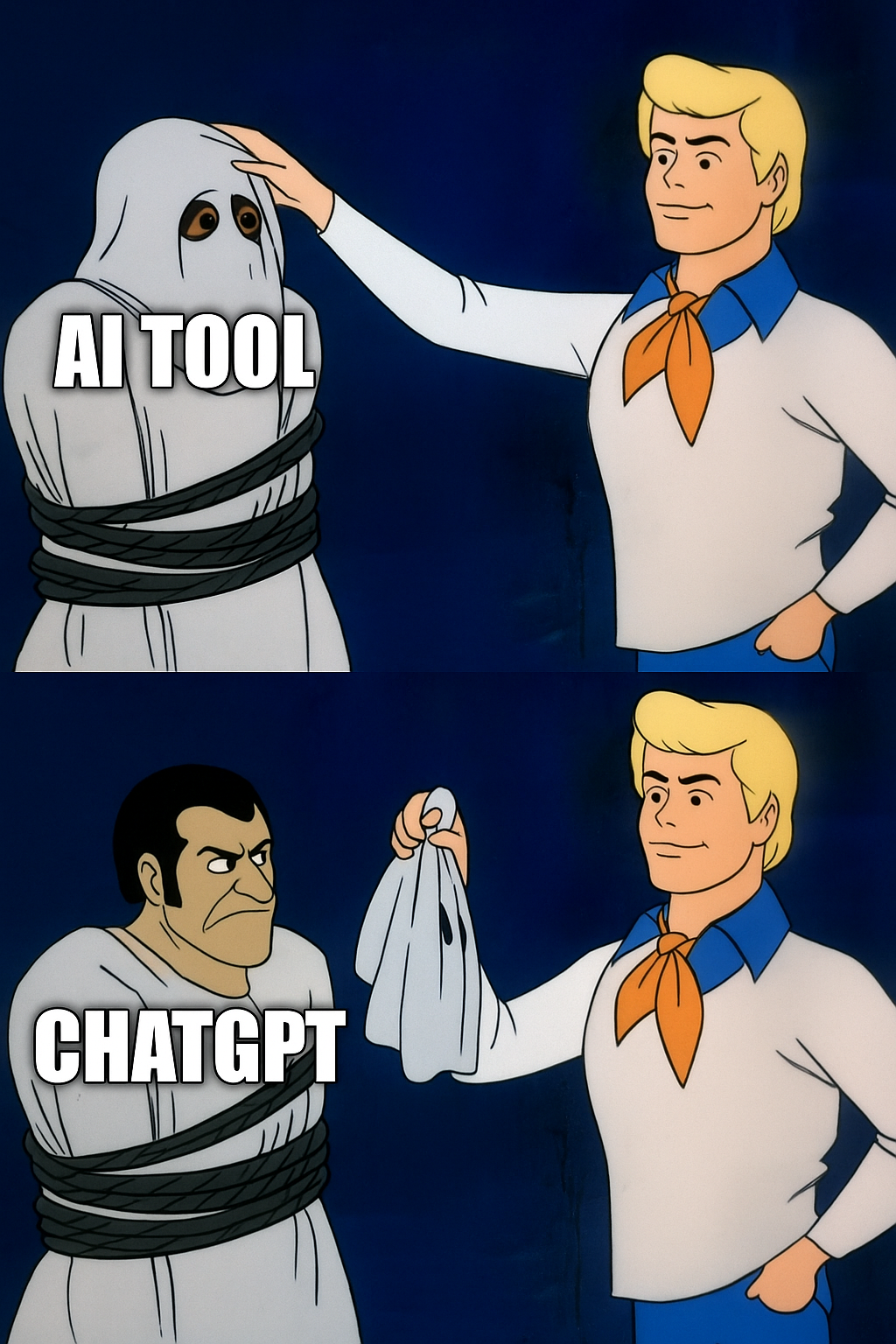
Knowledge Graphs: Intelligence With Roots
Now - Imagine a mind map where every node is a concept, and every line connecting them explains how they're related — that's a knowledge graph.
When paired with an LLM, a knowledge graph becomes the contextual backbone — a structured representation of your company's entities and relationships: deals, reps, objections, stages, pricing motions, product mentions, and outcomes.
Here's how this changes the game:
- The LLM is grounded in your actual GTM structure — so it doesn't need to guess what a "QBR" or "pilot signoff" means.
- Your knowledge isn't trapped in call recordings or siloed decks — it's connected and queryable.
- Every customer interaction, rep behavior, and objection becomes part of a learning loop, constantly improving how the AI reasons and responds.
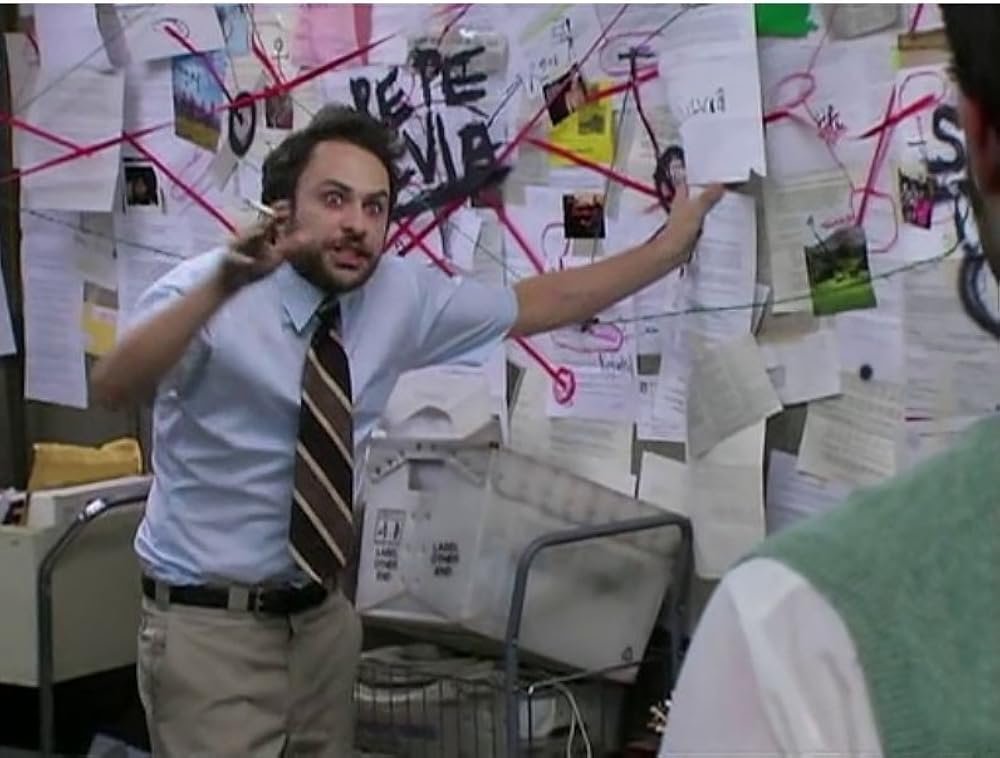
The wall is the knowledge graph which is contextually connected from point X to point Y
Why This Matters: Pain Points Sales Leaders Know All Too Well
If you're leading a sales org today, you've probably lived through this:
This is an incident we've listened to in different narratives from several CROs because this is the moment it hits most sales leaders: their knowledge is leaking — not because they don't have the data, but because they don't have a system to make sense of it.
Some of the biggest issues we saw (and still hear from CROs all the time):
- Tribal knowledge lives in silos: Our top rep had a brilliant way of handling pricing objections. Everyone knew she crushed those deals, but when a new rep joined, there was no playbook entry, no snippet to review - just, "Oh, ask Rachel. She's great at that."
- Coaching is always a step behind: Managers would spend hours every week scrubbing through Gong to catch potential issues - after deals were already on fire; playing post-portem rather than prevention.
- Playbook adherence is a guessing game: We'd roll out a new pitch deck or narrative… and then cross our fingers. "Is the team using it?" was met with anecdotal answers. No system told us who actually ran the right talk track and who went rogue.
- Spreadsheets are used like lifeboats: I once needed a quick answer before an exec sync: "Are reps actually discussing our new procurement process with prospects?" I got five CRM filters, three Gong links, one spreadsheet — and no confidence. It felt like asking for a snack and getting handed the ingredients and a recipe.
Zime's Solution: The AI Native Knowledge Graph
We transform raw sales data into a living knowledge graph accessible at your fingertips. Here's how it works:
AI That Learns from Every Interaction
Zime integrates seamlessly with your existing tools – calendars, CRMs (like Salesforce, HubSpot etc), and call recording platforms. Our AI quietly sits in every sales call with the rep and analyzes the conversation.
Best Practices That Turn Into Dynamic AI-Driven Playbooks
Zime doesn't just listen; it learns. Our AI identifies patterns, successful strategies, and common challenges to build a dynamic sales playbook. This isn't a static document; it's a living, evolving blueprint of your team's most effective selling motions.
Real-time Evaluation & Insight Generation ("Checklists")
This is where Zime truly shines. On every call, Zime's AI evaluates rep performance against the established playbook. It automatically generates detailed checklists that highlight adherence to best practices, identify key moments, and capture crucial details like objections raised, next steps, and specific product mentions.
These updates are then shared as pre and post-call nudges, based on deal stage, priority initiatives, and so on.
Compared to other tools:
- Gong captures call data. Zime structures it into your GTM DNA.
- Agentforce follows pre-defined rules. Zime evolves with your reps.
- Glean finds documents. Zime creates living knowledge from raw sales conversations.
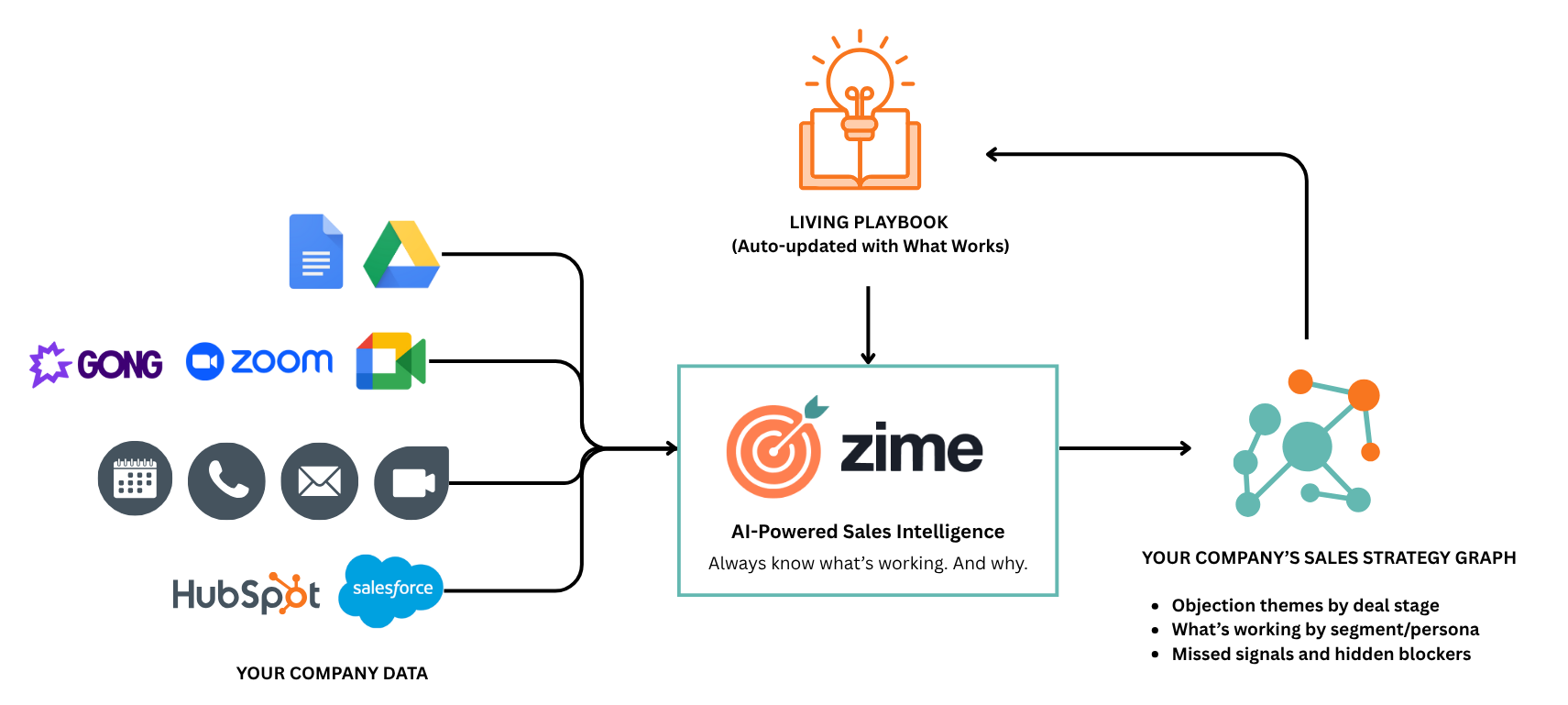
Building the Interconnected Knowledge Graph
All this rich, granular data – from the raw call transcripts and every detail of the generated "checklist", to all associated metadata about the user (e.g., rep function), the call (e.g., deal stage during call), and the deal (e.g., latest deal stage, deal movement) – isn't just stored in isolated silos.
It's meticulously organised into a comprehensive graph with deep relationships, allowing for powerful querying. Let's understand with an example;
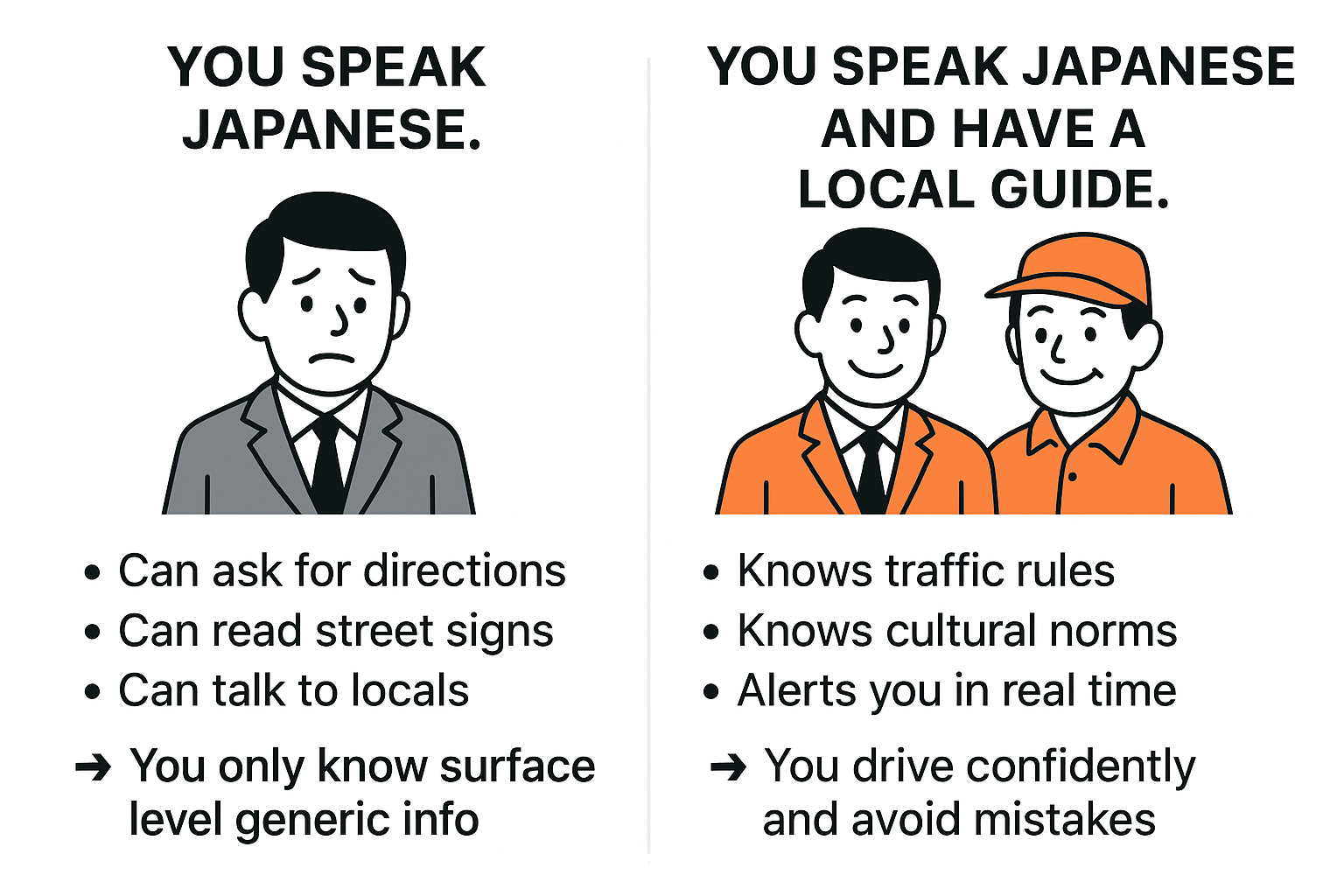
Zime is your local guide — not just a translator. The LLM helps you speak, but the Knowledge Graph helps you navigate the nuances of your GTM landscape with precision. It understands not just what's being said, but what should be happening at every moment of the sales journey.
The AI You Deserve is One That Understands Your Context
At the end the question is - why should you settle for an AI that treats your GTM motion like just another dataset?
Most AI tools today talk about productivity. But you don't need faster summaries or flashier dashboards. You need:
- Tools that understand your selling motion.
- A system that enforces your quarterly priorities.
- Insights that reflect your revenue reality.
That's what contextual AI delivers. And that's exactly what Zime was built for.
With Zime's native knowledge graph and core-context LLM, you don't just adopt AI — you shape it.
Ready to move beyond generic AI? Let's talk about what context-aware execution looks like for your sales team.

